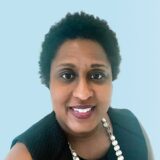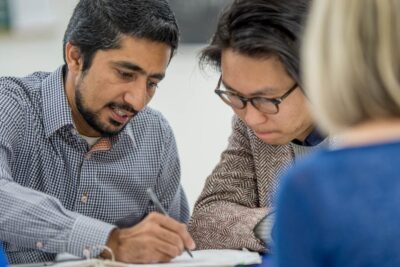If the price is right: Here’s what 6,000 students said about paying for graduate education
Our Adult Learner Recruitment team recently surveyed 6,000 graduate and adult students about their priorities, needs, and preferences. To me, some of the most interesting insights from the survey are around changes in students’ ability and willingness to pay for a degree. Read on for three findings from our survey that will help inform your program pricing and financial aid strategies.
Download the Full Survey Findings
1. Cost is the top barrier for prospective graduate and adult learners
Pricing graduate and adult-serving programs is notoriously difficult given the variety of modalities offered and competition from low-cost providers in this market. But a competitive price can have a significant impact on your enrollment. Students most frequently said that lower costs—either more affordable tuition and/or tuition assistance from an employer—would lead them to continue their education in the future.
So, how do graduate and adult learners define “high cost”? In our survey, 40% of students said they are unwilling to spend more than $1,500 per three-credit course, or $500 per credit hour. This is lower than the average cost per credit across graduate programs, which is closer to $650 across the last four years, according to NCES data. Notably, one-third of students are unsure how much they are willing to spend. For this group, it’s especially important to consider how you articulate your program’s value.

2. Graduate and adult students increasingly rely on outside funding to pay for school
More than half of the students we surveyed said they will have access to scholarships, financial aid, loans, or grants to help fund their education. But perhaps most interesting is how this trend has changed over time. Today, more students than ever expect to have scholarships and aid to pay for school. For example, 57% of respondents indicated they will have scholarships this year, up from 40% in 2018 (the first year of our survey). Graduate assistantships follow a similar trend. Only 12% of respondents in our 2018 survey said they would have a graduate assistantship, compared to 28% this year.
Have you optimized your financial aid strategy for graduate students?
Unfortunately, students have dedicated less funds to save for their education. In our 2018 survey, 57% of respondents said they would use personal/household income to fund their education, compared to 41% this year. And 34% of students surveyed in 2018 said they would use personal/household savings to pay for school, compared to And just 26% of respondents to this year’s survey.

3. Financial aid and scholarships are among the most important factors in students’ enrollment decisions
We also asked students to rank the most important factors in their enrollment decision. Financial aid/scholarships and cost of attendance ranked second and third, just behind program accreditation. Students also cite “generous financial aid awards” and “moderate tuition prices” as indicators of program value.
Watch on-demand: Optimizing Pricing and Aid Dollars for Graduate and Adult Students
Despite the importance of cost in students’ enrollment decisions, program landing pages often don’t include clear information about tuition, fees, or scholarships. But this is exactly the kind of information students are looking for. Forty-two percent of surveyed students said they seek information about cost when exploring university websites. Given the growing proportion of graduate and adult students who are “stealth”—or unknown to your institution until they apply—it’s critical that they can decide if your institution is right for them based on your website alone. If prospects can’t easily find information about price, scholarships, and aid, it’s unlikely your institution will make their short list.
5 trends in how grad and adult students are searching for programs
In this price-sensitive environment, it’s more important than ever to articulate a clear “return on education” to underscore your programs’ value and differentiate from competitors. Alumni testimonials and employment outcomes can help illustrate the value of an investment in your program. And as always, make information related to cost and aid as easy to find as possible. Including tuition, fees, scholarship opportunities, and financial aid details directly on program pages minimizes the amount of searching and clicking a student must do to find this enrollment-critical information.

More Blogs

What changed in the graduate lead gen landscape in 2025

We secret shopped 40 graduate programs’ lead nurturing campaigns. Here’s what we learned.
